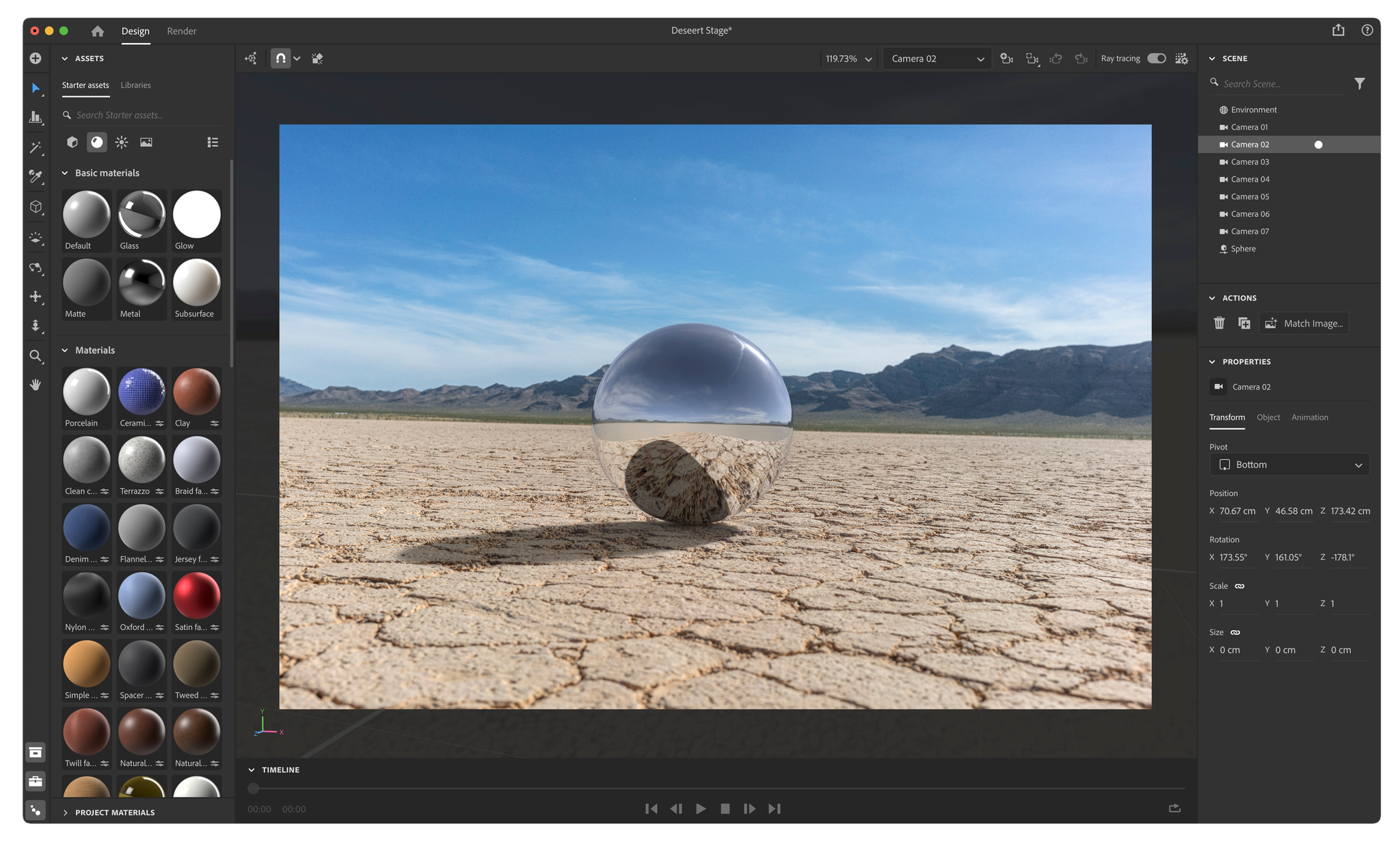
Adobe Substance 3D Stager: Complete Buyer's Guide
AI-enhanced 3D staging application
Adobe Substance 3D Stager positions itself as an AI-enhanced 3D staging application designed to streamline virtual photography workflows for marketing and design teams. Built around Firefly-powered generative AI capabilities, Stager targets organizations seeking to eliminate physical mockups while maintaining high-fidelity visual output [148][149][150].
Market Position & Maturity
Market Standing
Adobe Substance 3D Stager operates within Adobe's established Creative Cloud ecosystem, benefiting from the company's dominant market position in creative software while facing competitive pressure from specialized rendering and AI-generation tools [143][144].
Company Maturity
As part of Adobe's broader Substance 3D suite, Stager benefits from Adobe's enterprise-grade infrastructure and long-term viability. However, the platform's evolution from the discontinued Adobe Dimension creates transition challenges for existing users, requiring workflow adaptation and retraining [143][144].
Growth Trajectory
The platform's development reflects Adobe's broader AI integration strategy through Firefly technology, though specific growth metrics and adoption rates cannot be verified from accessible sources [148][149][150].
Longevity Assessment
The platform represents Adobe's strategic response to market demand for AI-integrated 3D visualization, though its positioning reflects incremental innovation rather than market disruption [139][145][149].
Proof of Capabilities
Customer Evidence
Research indicates Coca-Cola's design team reportedly leveraged Stager to eliminate physical mockups, while Ben & Jerry's allegedly achieved product renders without photoshoots during resource constraints [14][15]. HUGO BOSS reportedly uses the platform for e-commerce visuals and virtual try-on development [16].
AI Technology
Adobe Substance 3D Stager's technical foundation centers on Firefly-powered generative AI capabilities integrated into a real-time 3D staging environment [148][149][150].
Architecture
The platform operates within Adobe's Creative Cloud ecosystem, providing native integration capabilities that enable seamless workflows between applications and direct Photoshop editing [139][145].
Primary Competitors
Stager faces competition from KeyShot, which outperforms in ray-traced rendering quality for complex scenes, and specialized AI tools like Meshy that offer dedicated text-to-3D generation capabilities [143][149].
Competitive Advantages
Stager's primary strength lies in native Adobe Creative Cloud integration, enabling seamless workflows between applications and direct Photoshop editing capabilities [139][145].
Market Positioning
Adobe positions Stager as a workflow integration solution for Creative Cloud users rather than a standalone 3D powerhouse [139][145].
Win/Loss Scenarios
Stager wins when Adobe ecosystem integration is critical, brand consistency requirements are high, and workflows center on staging existing 3D assets rather than generating new models [139][143][145]. The platform loses to specialized alternatives when advanced ray tracing, standalone AI modeling, or cost optimization are primary requirements [143][149].
Key Features

Pros & Cons
Use Cases
Featured In Articles
Comprehensive analysis of AI 3D Mockup Tools for AI Design for AI Design professionals. Expert evaluation of features, pricing, and implementation.
How We Researched This Guide
About This Guide: This comprehensive analysis is based on extensive competitive intelligence and real-world implementation data from leading AI vendors. StayModern updates this guide quarterly to reflect market developments and vendor performance changes.
150+ verified sources per analysis including official documentation, customer reviews, analyst reports, and industry publications.
- • Vendor documentation & whitepapers
- • Customer testimonials & case studies
- • Third-party analyst assessments
- • Industry benchmarking reports
Standardized assessment framework across 8 key dimensions for objective comparison.
- • Technology capabilities & architecture
- • Market position & customer evidence
- • Implementation experience & support
- • Pricing value & competitive position
Research is refreshed every 90 days to capture market changes and new vendor capabilities.
- • New product releases & features
- • Market positioning changes
- • Customer feedback integration
- • Competitive landscape shifts
Every claim is source-linked with direct citations to original materials for verification.
- • Clickable citation links
- • Original source attribution
- • Date stamps for currency
- • Quality score validation
Analysis follows systematic research protocols with consistent evaluation frameworks.
- • Standardized assessment criteria
- • Multi-source verification process
- • Consistent evaluation methodology
- • Quality assurance protocols
Buyer-focused analysis with transparent methodology and factual accuracy commitment.
- • Objective comparative analysis
- • Transparent research methodology
- • Factual accuracy commitment
- • Continuous quality improvement
Quality Commitment: If you find any inaccuracies in our analysis on this page, please contact us at research@staymodern.ai. We're committed to maintaining the highest standards of research integrity and will investigate and correct any issues promptly.